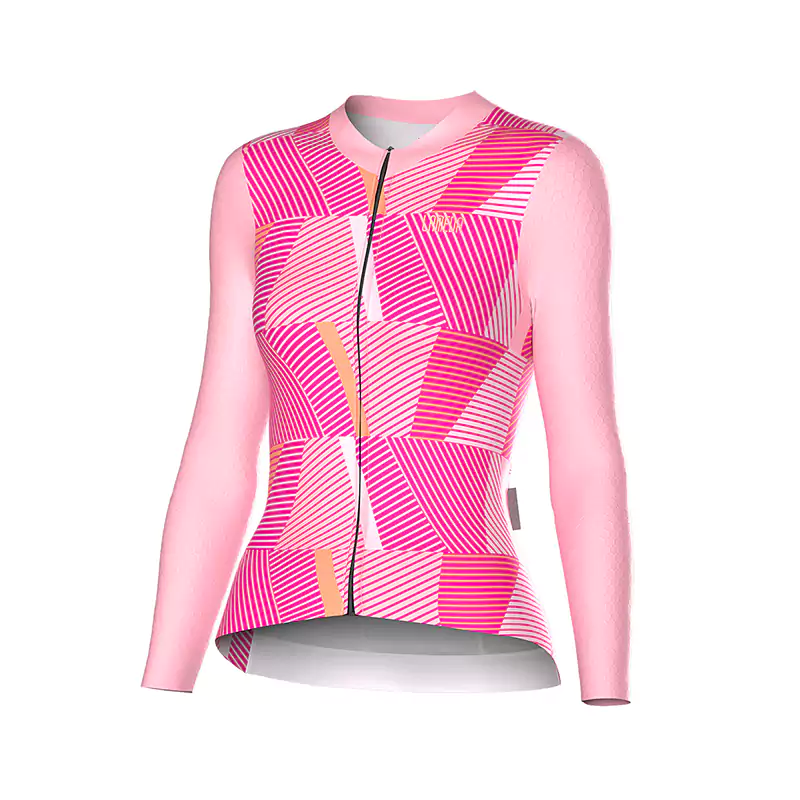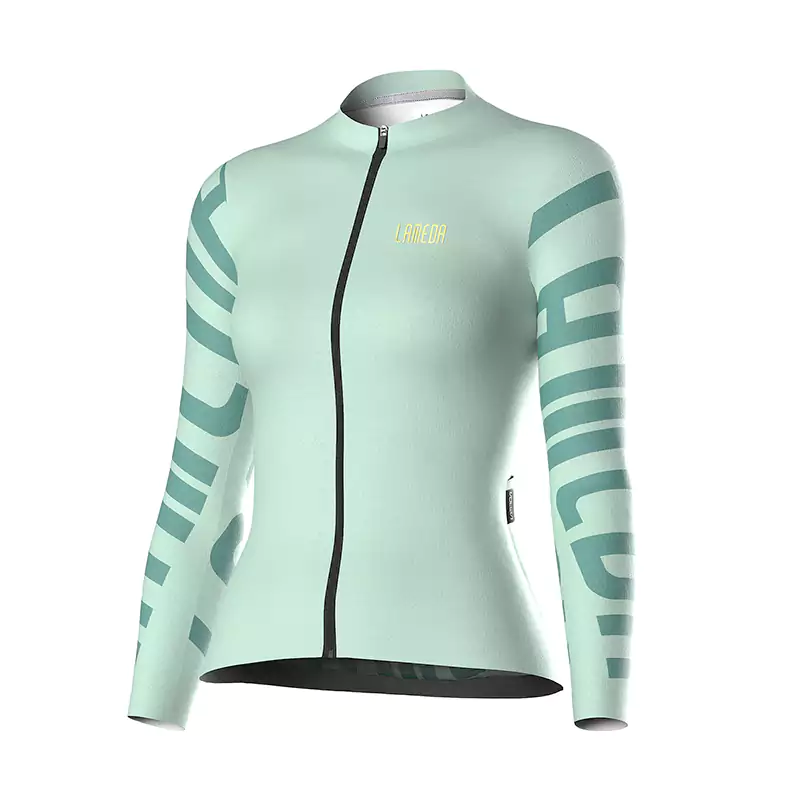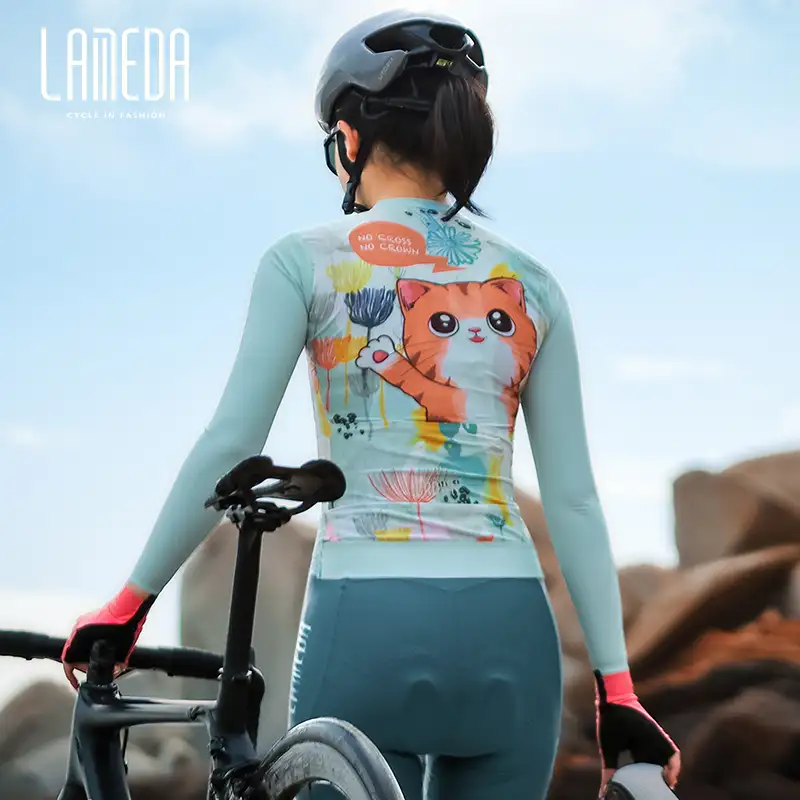Cycling jerseys have come a long way in terms of design and functionality. One notable feature of many modern cycling jerseys is the arbitrary cuts, which refers to asymmetric panels and non-standard shaping.
Modern cycling jerseys are made from advanced synthetic fabrics and are engineered for aerodynamics, moisture wicking, temperature regulation and comfort in motion. There are several reasons why this type of cut is commonly used.
Aerodynamics
One of the main goals in cycling jersey design is making the garment as aerodynamic as possible. Wind tunnel testing has shown that close fitting cycling jerseys can provide a performance advantage by reducing aerodynamic drag. However, a jersey that fits too tightly can constrict movement and blood flow. This is where the arbitrary cut comes in handy. By using asymmetric fabric panels and darting, the jersey can closely conform to the rider’s body shape in an aerodynamic profile without restricting mobility. The contours of the jersey match the contours of the rider’s torso allowing air to flow smoothly over the surface. Arbitrary cuts allow for a body-hugging aero fit while still leaving room for unrestricted arm movement.

Comfort and Stretch
Another important factor in cycling jerseys is providing comfort and stretch so the rider can perform at their best. Cycling involves a lot of different body positions and movements such as hunched shoulders, tilted pelvis and twisting torso. A jersey has to be able to accommodate all these positions without any pulling, tightness or restrictions. The panels and darts used in the arbitrary cuts are positioned and shaped so that the fabric stretches easily in areas that need more give. This allows for freedom of movement while maintaining a streamlined fit. The asymmetric panels are also positioned to support the body in key areas like the lower back. The arbitrary cuts offers a tailored feel without uniform tightness.
Moisture Wicking
Effective moisture wicking is essential in cycling jerseys to keep riders cool and dry. Sweat-soaked jerseys can lead to chafing issues and lowered body temperatures. The arbitrary cuts helps enhance moisture management. By incorporating mesh paneling strategically in heat zones, sweat can be dispersed and quick drying time can be achieved. The side panels in jerseys are often made of open mesh to allow maximum breathability and airflow to aid evaporation. Other panels like underarms may also have mesh inserts. The asymmetric design provides flexibility in moisture wicking fabric placement.

Temperature Regulation
Cycling puts high demands on temperature regulation due to the wide variation in conditions and effort levels. Arbitrary cuts allow LAMEDA cycling jerseys to be designed with cooling zones so heat can escape while riding. Mesh panels under the arms, down the sides, and on the back not only aid moisture wicking but also ventilation. Zippers at the collarbone and near the lower back can also be opened for increased airflow when needed. Strategically placed breathable zones help prevent overheating without sacrificing aerodynamics in the core front of the jersey.
Pockets
Almost all cycling jerseys incorporate pockets on the back for storage and access to nutrition. The asymmetric panels of arbitrary cut jerseys allow the pockets to be positioned for ergonomic access. The pockets are typically angled so the openings sit closer to the rider’s hands for ease of reaching snacks, phone, or tools. Sometimes the lower back panel is extended further down to support the weight in the pockets without sagging or bouncing. Pocket construction and seam placement is also facilitated by the flexible panel design.

UV Protection
Most cycling jerseys provide UV protection in the form of SPF ratings and tight knit fabrics. Long sleeves and higher collar necklines also limit sun exposure. The arbitrary cut allows jersey designers to incorporate features like full length zippers to customize ventilation and sun protection. The asymmetric fabric layout also lends itself to creative placements of seamless, athletic-fitting collars and cuffs to limit UV exposure.
Visual Interest
In addition to performance features, cycling jerseys have become a way for riders to express their personal style. Unique prints and colors combinations are popular in cycling apparel. Arbitrary cuts allow for more interesting visual designs compared to basic symmetrical paneling and shapes. Variations in fabric texture and print patterns can be incorporated into panel detailing for artistic impact.
The development of athletic wear fabrics and garment construction techniques have allowed cycling jerseys to become highly engineered for specialized performance. Arbitrary cut designs allow manufacturers the freedom to create jerseys tailored for fit, function and expression. The non-uniform contours and panels accomplish the dual goals of technical performance and aesthetics. Cyclists benefit from jerseys that are anatomically fitted for aerodynamics, comfort, moisture management and accessibility while also offering visual interest and self-expression. As cycling continues to grow, we can expect further advancements in cycling jersey engineering including more use of 3D mapping and printing for enhanced arbitrary cuts designs.

